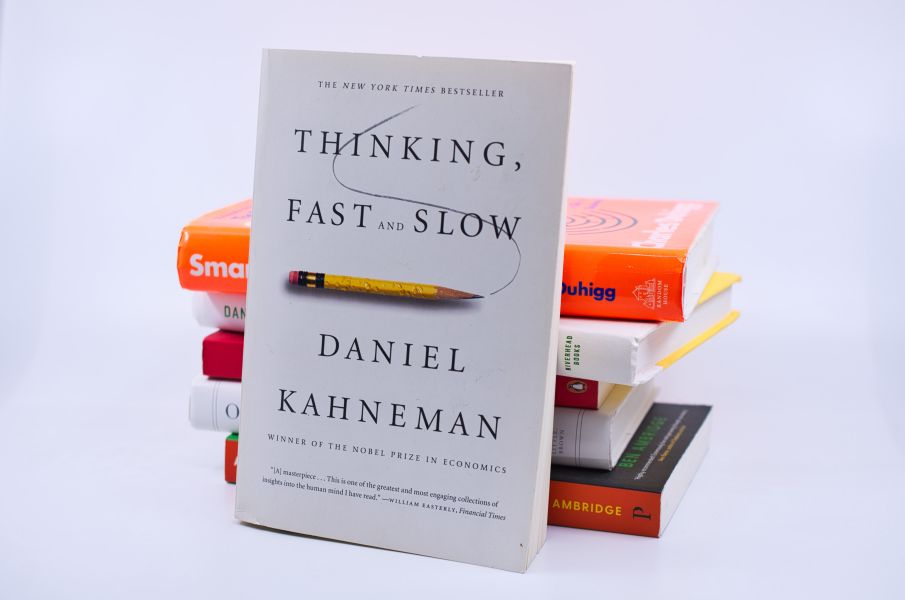二年级英语说课稿范文一:Who’sthat
我说课的内容是小学先锋英语第三册Unit 3Who’s
that?本课是第二课时,学生在第一课时的学习中已经掌握了句型:Who’s that? That
is….本节课的教学内容是通过看图说话,俩俩对话复习和巩固句型Who’s that? That
is…,并以此句型为基础,自主听、读、演来学习故事,通过俩俩说、小组说的形式来学习句型:This
(That)is…,he/she is from….扩展学习句型:I’m from( ),China.
本课以句型训练为主线,通过看、听、说、演练、等一系列教学活动,使学生获得英语听说能力,并在教学中充分激发学生强烈的学习愿望,在注重学生知识能力发展的同时,特别强调学生人格的发展和思维的发展。同时,我在教学中始终注意关注学生的情感,创造和谐、民主、宽松的学习氛围,激发学生学习英语的兴趣和愿望,并且使学生通过合作学习体验集体荣誉感和成就感,从而树立自信心,发展自主学习的能力和团结协作精神。
接下来我分析一下本课的教学目标:
依据:《英语课程标准》的要求,基础教育阶段英语课程的目标是以学生语言技能、语言知识、情感态度、学习策略和文化意识的发展为基础,培养学生英语综合语言运用能力。现将本课的教学目标设计如下:
知识目标:1、 使学生掌握句型:who is that? That is…He/She is from
(Canada/China…)
2、三会单词: Britain Canada China
3. 扩展句型:I’m from ( ), China.
技能目标:
(1) 用PPT方式提供一定主题内容的图片和关键词句,培养学生在key
points辅助下进行口语表达的能力;
(2)
通过师生问答、俩俩对话、小组对话角色扮演等多种言语交际活动培养和提高口语交际能力和在日常生活中迁移运用英语的能力;
(3) 通过自主听故事,使学生在语篇的听读中增强语感,提高听力.
情感态度目标:
通过本课的学习使学生有兴趣听、说英语,通过句型的学习,潜移默化地渗透思想品德教育,使学生意识到自己来自中国,香港、台湾是中国领土的一部分。通过表演活动逐步培养孩子们的相互协作意识。
学习策略目标:注重培养学生的合作精神,使学生积极与他人合作,共同完成学习任务。并通过创设大量的生活情景,使学生积极运用所学英语进行表达与交流,对所学内容能主动练习与实践,从而逐步培养自主学习的能力。
结合教学目标的要求,我把本课的重、难点设置为:
HeShe is from (Britain)
2、三会单词: Britain Canada China
我通过围绕教材<设置语境>—抛开教材<启发引导>—回到教材<领悟感知>—不要教材<灵活运用>这四个环节来突破教材重难点。也就是说,在设计教学活动的伊始,要紧紧围绕教材,充分利用实物、图片、录音、投影等多种直观教具和教学手段,结合学生生活实际,为学生创设各种语言情景,使英语单词、句子与它们所表达的意义直接挂钩。呈现新内容时,抛开教材,让学生在设置的真实语境中,建立所学知识的概念框架,启动学生积极地体验、实践、参与学习活动。在初步掌握教材内容后,把学生带回教材进行整体感知,并做适当的知识巩固和记忆性的练习活动,客观对所学知识的意义建构理性认识。最后指导学生不要教材,联系实际加以应用,进行逼真的思想情感和信息交流,实现灵活地、创造性地运用英语进行交流的目的。
以上是我对教材内容的分析,下面我将对本课教法做具体阐述。
依据《英语课程标准》中的基本理念,英语课程要面向全体学生,注重素质教育,特别强调关注每个学生的情感,激发他们学习英语的兴趣,帮助他们建立学习的成就感的自信心。使他们在学习过程中培养英语综合运用能力。所以本课采用“情意、情景、结构、规则、功能”的十字教学法。就是说使学生怀着轻松愉快的情绪,克服困难的意志,在语言情景中对话、操练,运用英语进行交流。
首先说在情意教学方面,注重开发学生的非智力因素,缩短师生之间的距离,变教师为教学民主。强调以学生为本,尊重学生人格,建立一种和谐、民主和教学氛围,使每个学生以轻松、愉快的心态参与外语学习活动。
其次说,在情景教学方面,,创设具体生动的场景,激起学生的学习兴趣,从而引导他们从整体上理解和运用语言。我在整个课堂教学中,都使学生在一种有意义的情境中学习。使学生明白who
is that? That is…He/She is from
(Canada/China…)这两个句子的意义和使用场合。使学生能把语言和情境直接联系起来。能做到听到句子,就想到情景,看到情景,句子就能脱中而出。
然后,我说一说在结构教学方面的应用。通过师生问答、俩俩对话、小组对话角色扮演等多种言语交际活动使学生在民主和谐的氛围中完成对所学知识的意义建构。
最后,我说一说十字教学法中的语言功能教学法。语觉论认为,语言的根本目的是交际,培养学生语言能力的途径也是交际。本课正是在语觉论的这一思想指导下,以“言语交际为中心”,借助多媒体网络提供的多种资源,以看图对话,自主学习、自主听、读、演故事为突破口,使学生在有丰富语境和真实的交际情境中培养听说能力和综合语言运用能力。
以上是我对教法的分析。下面,我结合教法的指导思想,具体阐述对本课学法的安排。
本课采用的是温故知新、循序渐进、观察分析的学法指导。让学生在创设的真实的语境中进行模仿、操练、交流。在学习过程中,从学生的学习兴趣、生活经验和认知水平出发,倡导体验、实践、参与、合作与交流的学习方式。培养学生的英语综合语言运用能力,使学生形成积极的情感态度,主动思维,大胆实践,提高跨文化意识,形成自主学习的能力。
接下来,我说一下对教具、学具的安排使用。
依据英语教学的直观性、趣味性和实践性原则,结合学生生活实际创设各种情境,充分利用了实物、图片、录音、投影、VCD这些媒体来辅助教学。
下面我说一说对教学程序的设计安排。
因为英语课程的学习,既是学生通过英语学习和实践活动,逐步掌握知识和技能,提高语言实际运用能力的过程,又是他们陶冶情操,拓展视野,开发思维能力,发展个性提高语言实际运用能力的过程。所以,整个教学程序,我遵循“广视听、创情景 勤练习、重交流”的原则,采用Revision<复习>,Knowledge
and drills <呈现新知和操练>.Comprehension<理解>.Application<应用>.
eva luation<评价>这五个步骤来组织教学。
Step I Warm up: Who’s that?
演唱英文儿歌Who’s that? 让学生唱这首英文儿歌既能激发学习兴趣,又能复习句型,呈上启下。
Step II Revision
T: Who’s this? This is (Ann). (Put the character masks
along the blackboard.)
T: Who’that? That is (mocky). (Put the character away
the teacher.)
Who’s this? This is …
Who is that? That is ….
T: 用两个相对的 同学引导。Who is ( )? ( ) is ( ). Who is ( )? (
) is ( ).
Write the sentences on the blackboard. Read the
sentences. Correct “this, that.”
用远近不同的对象来作参照物引导学生理解的区别,
用学生本身形象化的直观教具,以唤起学生开口说英语的愿望,从而检测所学过的内容
Step III Practise
T does a model. Park work. can you make sentences like
this in pairs.师生师范,学生俩俩对话练习句型。(鼓励学生可以用老师作例)
在此环节中学生以周围的学生、老师为例俩俩说,联系生活实际,灵活运用句型。
Step IV Picture talking
T: There are some pictures. You can choose one picture
to talk about using the key points.
提供3幅看图说话的图片,学生在Key points 的引导下进行自主说、俩俩说。
Picture A: Key points: Who’s that? That is
father/mother…
Picture B:
Key points: Who’s that? That is Ken/Tommy
Picture C: Key points: Who’s that? That is
Cathy/Ann…
(此环节根据学生已掌握的知识,选取学生感兴趣的话题,让学生围绕屏幕上展示的图片进行俩俩对话。这样,可以使学生将已学的知识和新学的词、句有机结合,从而实现语言的积累性发展,并逐步掌握灵活运用语言的能力。提供Key
points的目的在于启发学生说些什么以及如何说(必竟这些只是小学低年级的学生,语言能力还是很有限的),在课堂上要引导学生尽可能多说。在这个活动中学生并不只是一味地模仿,而是从教师提供5幅图的key
points中得到启发,自己动脑思考,所以在发展语言能力的同时还能锻炼其思维能力。)
Step V Story
T: Boys and girls let me tell you a story today. Now,
please listen to the story first.
please listen to the story by yourselves.
(自主听故事。)
Pease answer me question:
回答问题理解故事。
引出今天学习的重点句型:
Picture6: T: Who is this?” Ss: “This is Cathy. T: “Where
is she from?”
T elicit Ss: She is from Canada.
Picture7: T: Who is that?” Ss: “That is Cathy. T:
“Where is he from?”
T elicit Ss: She is from Britain. (呈现国旗图片)
T: Where is she from?
T elicit Ss: She is from China.
(自然过渡到学习China.,为扩展学习I’m from ( ), China.做准备。)
T: I’m from Jiang Xi, China.(repeat)
Where are you from?
扩展学习句型I’m from ( ), China.
S1: I am from…T: Where is she from?
S2: I am from…T: Where is he from? (T point the
students)
T: Can you tell your partner: Where are you from?”
小组对话练习句型。
Activity: T—S1: Where are you from?
Ss: I am from…
Let students come to blackboard
T do a model introduce them. “This is …She (he) is from…
(通过小组说从介绍自己来自哪里过渡到介绍别人来自哪里,结合生活实际灵活运用)
表演故事,自主编动作。
我通过开展师生之间,生生之间多种有意义的交互活动。引导学生进行大范围的听说训练,强化学生的听说能力及综合运用语言的能力。坚持做到词不离句,句不离篇,体现以言语交际为中心的教学思想。在活动过程中,适时予以精神鼓励和物质奖励。既培养了学生的团结协作精神,又使得语言知识转化为语言技能。实现灵活地,创造性地运用英语进行交流的目的。
反思:句型得到了充分的练习,但由于毕竟是二年级的学生,应设计一些游戏类的活动起到调节课堂气氛的作用。
二年级英语说课稿范文二:BLet’s
Good afternoon everyone:
今天,我说课的内容是PEP教材BookⅡUnit4 B部分的Let’s talk。这部分教材的选用和设计都充分体现了语言的交际功能,突出语言教学的目的是为了应用,并运用语言来完成有实际目的的任务。
本课时的中心话题是“Can I have an apple , please ?”因为 A部分的Let’s talk已经教学了句型“Do you like pears ?”,给本课时的会话教学提供了铺垫。因此,本课时的功能主要是在此基础上,使学生能够根据自己的口味运用句型“Can I have …?”,表达自己想要什么水果的愿望,并能运用语言在实际情境中展开交际活动。
《英语新课程标准》是以学生的综合语言运用能力的发展水平为目标的,因此,我制定了这样的教学目标:
1、在会话中学习掌握新单词apple , bananas, strawberry , grages。
2、能听懂、会说Let’s talk部分的会话,并在生活实践情境中学习和运用句型“Can I have an apple , please ?”。
3、在情境中激发兴趣,培养大胆实践的精神;在交际中沟通情感,促进人际关系。
为了全面落实教学目标,我进行了以下的教学设计:
首先是Warm-up(热身)。
小学生生性好动,好奇心强。为了吸引他们的注意力,在Warm-up这个环节我准备了两个装有水果的箱子。
A箱中装有已学单词的水果(peach , orange , watermelon, pear)
B箱中装有要学单词的水果(apple , bananas, strawberry , grapes)
教师从A箱摸出一个水果,与一组学生合作,用句型“Do you like pears ?Yes , I do . /No , I don’t .”进行师生对话。
教师演示一个水果后,让学生在小组中自由开展对话。
等学生从A箱中摸出3、4个水果之后,教师可以将游戏引向B箱,这时,学生拿出水果,想说,但因为没学过,不会说,而遇到了困难,而这个困难适时地激发了学生想说,想学新单词的欲望,教师就可以利用这个机会在句型中渗透教学新单词(apple , bananas, strawberry , grapes)。
这个环节通过摸水果,激发了学生的学习兴趣,同时将教学过程过渡到第二个环节Presentation(新课导入)。
任务型语言教学是一种以任务为中心,以完成任务为目的的交际性教学模式。它主张创设一种接近实际生活的真实情境,让学生通过感知、体验、实践、参与和合作探究等活动方式学习和使用语言,培养学生语言实际运用的能力。
一开始,我就创设了这样一个情境:Look ! These children have a party at Miss White’s home . They are having fruits , now。以观看录像的形式,让学生整体感知对话,对即将学习的新句型有一个初步的印象。会话中的一部分句型在A部分的Let’s talk中已经教学过了,教学中可以截取其中一段录像,将重点句型反复多放几遍,让学生边看、边听、边说,领会句型大意。
接着,出示一些食物水果放在讲台上,对学生说:“Do you like fruits ? Do you want some fruits ?”,激起他们想要什么水果的欲望,再引导他们用句型“Can I have …?” “Certainly!”与教师进行交际。这样,做了一、两次示范以后,学生就能以Group Work的形式对这个句型进行交际训练。
英语是一种活动,通过活动让学生在情境中体验和参与交际的同时得到不同的发展。因此,在设计Practise这个环节时,我力求满足不同类型不同层次学生的需求,使每一个学生的综合语言运用能力都得到发展:
首先,告诉学生:Fruits are so sweet ! And they are good to our healthy . There are many fruits in the English Supermarket . Let’s go to the Supermarket and have some fruits ! English Supermarket(英语超市)是我为了让学生的学习学以致用而创设的,根据每个单元教学内容的不同而设置相应的物品,本课时,我设置了水果、食物、饮料等物品,学生只要能够用本课时所学的句型进行表达,就能得到自己想要的物品。伴随着音乐,师生共同哼唱着歌曲《An Apple A Day》,与好友一起结伴共游English Supermarket。
由于学生语言水平存在着差异,到达English Supermarket之后,有教师加入的一组可以率先展开交际活动。如:“Do you like bananas ? Sorry , I don’t like bananas . ”“Can I have an apple , please ? Certainly!”等,给部分语言水平不高的学生作示范。对于这部分学生来说,他们的目标是能听懂教师这组的英语会话,并能模仿在自己小组开展交际活动。
但是部分语言水平较高的学生不用看示范也能自由组织语言进行交际。为了给这部分学生拓展语言提供发展的空间,我在超市的部分柜台上另外放置了一些食物、水果,引导他们联系实际,就地取材,自主组织语言,例如:“Do you like orange juice? Can I have some Coke , please? Can I have some French Fries , please? Certainly! Here you are .”等。这样就能使每个层次,每个类别的学生在下课的时候,都能这样说:“Learned this lesson , I feel get great gain .”
以上是我的说课,Thank you for your listening !
二年级英语说课稿范文三:MainlyRevision
PART 1 Analysis of the Teaching Material
(I)STATUS AND FUNCTION
1.This unit is a revison unit, so it covers all communicative language knowledge learned from Unit 7 to Unit 11.
2.This lesson is the first one of Unit 12. So if the students can learn this lesson well, it will be helpful to make the students learn the rest of this unit.
3.This lesson is a dialogue about keeping fish. Such topic is related to daily life, so it is helpful to raise learning interests of students and it will be also helpful to improve their spoken English.
(II)TEACHING AIMS AND DEMANDS
Knowledge objects
1. To make the Ss know how to keep fish, birds or any other animal by learning the dialogue of this lesson.
2. To give a reinforced practice in the use of the Modal Verbs and some useful expressions for making suggestions.
Ability objects
3. To improve students’ listening and speaking ability by reading and practising the dialogue.
4. To develop students’ communicative ability by learning the useful expressions for making suggestions and replying.
Moral objects
5. To enable the students to love life and animals, protect the nature and environment.
(III)TEACHING KEY POINTS:
1.To make the Ss grasp and understand the way of making suggestions and reply in daily life.
2.To enable the students to use useful expressions for making suggestion and replying in their own dialogues related to the daily life.
(IV)TEACHING DIFFICULTIES:
1. The usage of the Modal Verbs ,especially usage for making suggestions.
2. Using the learned phrases and sentence patterns to make suggestions and replying.
(V)TEACHING AIDS:
Multi-media computer; OHP(overhead projector); tape recorder; software: Powerpoint or Authorware
PART 2 Teaching Methods
1>Five Steps Approach.
2>Communicative Approach.
PART 3 Studying Ways
1. Teach the students how to be successful language learners.
2. Teach the students how to master dialogues and how to communicate with others.
PART 4 Teaching Procedure
Step 1 Revision
Get the students to give some animals’ names they know by asking the students the following question: Can you give us some names of different animals you know? This step is employed to revise the words related the animals. At the same time draw the students’ attention to the topic about animals.
Step 2 Lead-in
Sign to the students to be quiet and close their books. Then start a free talk with the students. Use computer to show some pictures of different pets, such as dogs, cats etc. Ask the students several questions about raising pets. These questions are employed to warm up the students and raise the interests of the students to speak English in class on the topics they like and familiar with.
1.Do you like animals?
2. Do you keep any animals at home? What is it or What are they?
3. Can you explain how you care for them?
4. How do you feed them?
…
Step 3 Dialogue Presentation
1. The first listening
After the teacher's brief introduction to the dialogue about keeping fish. Then ask the students to listen to the tape of the dialogue with their books closed. After listening to the dialogue, ask the students to answer two simple questions focusing on the general idea of the dialogue. This step is employed to make the student get the general idea of the dialogue as a whole one. At the same time let the students have a chance to practise their listening ability.
Questions :
1.Where will such dialogue happen in your opinion?
2.What are they mainly talking about?
2.Second listening
This time ask the students to listen to the tape carefully with their books open. After listening, ask the students some questions focusing on the details of the dialogue. In the meanwhile, deal with some language points raised by the students or appearing in the questions.
Questions: (Show the questions and answers on the screen using computer)
1. What does Kate want to do ?
2. Where would Kate keep them at first?
3. What does LiQun advise her to do?
4. What size tank should she get?
5. What should Kate put in the tank?
6. Why should Kate put a few large rocks in the tanks?
7. Why should Kate put some underwater plans in the tank?
Language points: (Show them on the screen using computer)
a. the other day = a few days ago
b They don't get enough air:
With a bowl, only a small surface area of the water is in contact with the air. So the water does not receive enough oxygen.
c 30 cm by 30 cm by 50 cm.
We describe two-dimensional and three-dimensional measurements using the word by. So the length of the tank is 50 cm, and the width and height both 30 cm.
e underwater plants:
These plants oxygenate the water and keep it clean.
d For one thing = one reason (for putting plants in the tank)
Step 4 . Dialogue Drill
1.In this step the students are required to practise the dialogue in pairs by reading the dialogue aloud. This step is employed to make the students grasp the useful phrases and sentences pattern for making suggestions and replying on the base of reading the dialogue fluently.
2.Let the students find out the expressions and sentence patterns for making suggestions and replying in this dialogue , in the meanwhile show these expressions and sentence patterns on the screen by computer one by one. This step is employed to give the students a deep understanding of those expressions.
Step 5 . Practice (part 2)
In fact, this step is intend to deal with the second part of the lesson(part 2). First show the words and phrases given on the screen, using a multi-media computer, then ask the students to make short dialogues with their partners to practise making suggestions and replying, using the phrases given in the table of Part2 .Give the students 5 minutes to prepare it. Ask the students to pay particular attention to sentence stress and intonation. At last ask some pairs to act their dialogue out in front of the whole class. This step is employed to make the students get a further understanding of these expressions.
Step 6. Consolidation( Dialogue Production)
This step gives the students 5-8minutes to make a similar dialogue using the phrases and sentences patterns learned in this dialogue and everyday life experience according to the given situation (show it on the screen using a multi-media computer). After 5-8minutes,ask several pairs to act their dialogue out in front of the other students. At last the teacher give some advice on making such dialogues, in the meanwhile deal with the moral lessons which the students should learn from the dialogue (mainly told the students to love life and animals, protect the nature and environment) . This step is employed to create a language environment for students’ communication in the class; and to give the students a chance to practise their spoken English under a quasi-communicative situation. If the students can finish this task well, they will benefit a lot in their spoken English.
Situation:(show it on the screen using computer)
One of your classmates wants to keep birds, he/she wants to buy some birds and builds a bird cage as big as 4m by 2m by 2m. he/she would like to ask for your advice. Now you’d like to advise him/her what to do?
Step 7. Workbook
Finish E__ 1 and 3 orally, left Ex 2 as written work.
Ex. 1 revises the Object Clause. When transforming the structures, the students are required to pay attention to the change of t he verb tenses, personal pronouns and word order. After doing the exercises orally in class.
Ex. 2 is a revision of the Modal Verbs and some useful expressions. Let the Ss work in pairs and then check the answers with the whole class. Write down the sentences on the Bb for the Ss to see.
Ex. 3 lists pairs of words with somewhat similar pronunciation but different meaning. Get the Ss to read aloud the words and say what each of them means.
Step 8 Homework
!.Do Ex 2 in the exercise books. This is used to make the students have a further understand of the modal verbs.
2.Write a short passage about the dialogue learned. This is used to practise writing ability of the students.
推荐文章
河南510分文科能上什么大学,2024年能上哪些大学2024-06-05 07:29:14
辽宁高考排名113630左右排位物理可以上哪些大学,具体能上什么大学2024-06-05 07:24:36
天津高考排名18900左右排位综合可以上哪些大学,具体能上什么大学2024-06-05 07:21:34
四川高考排名9910左右排位理科可以上哪些大学,具体能上什么大学2024-06-05 07:18:37
南昌航空大学科技学院和贵州民族大学哪个好 附对比和区别排名2024-06-05 07:15:56
贵州高考排名42590左右排位理科可以上哪些大学,具体能上什么大学2024-06-05 07:11:12
三年级数学说课稿优秀范文2023-08-19 03:28:41
外研版小学六年级英语教案范文2023-08-11 04:21:48
八年级英语教案范文格式2023-08-26 19:53:27
三年级上册英语教案最新范文参考2023-08-19 13:28:29
三年级数学说课稿优秀范文2023-08-19 03:28:41
外研版小学六年级英语教案范文2023-08-11 04:21:48
八年级英语教案范文格式2023-08-26 19:53:27
小型婚礼如何策划方案三篇2023-08-24 02:56:28
婚礼公司婚礼策划方案六篇2023-08-17 10:31:21
婚礼策划方案三篇2023-08-17 14:20:05





